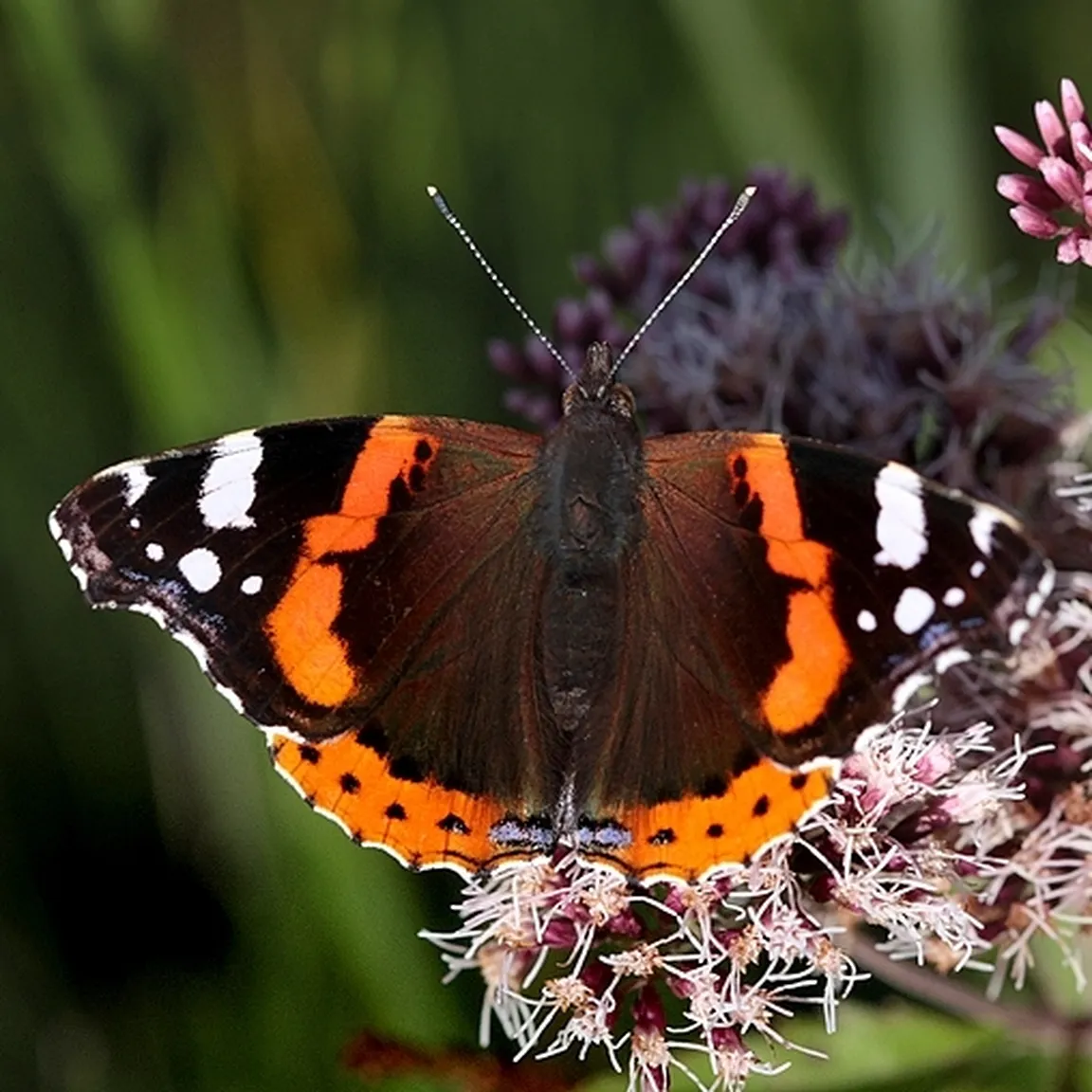Wingspan: 50–60 mm
Flight period: in two or three generations, from May to October
Larval food plant: great nettle (Urtica dioica)
Admiral (Vanessa atalanta) is one of our most recognizable and common butterflies. The dark brown upper side of the wings is adorned with a pattern of vivid red and white colors on a black background. A red stripe runs across the forewings, which gave it its name. In the outer upper corner there is another elongated, four circular and one spearhead-shaped spot, all snow-white. The hind wings are predominantly brown on the upper side, and a vivid red stripe, interrupted by four brown spots, runs along the lower edge of the wings. On the inner side of this stripe there are two light blue spots with a metallic sheen. The underside is more colorful. The forewings on the underside are decorated with a pattern similar to the above, only that between the red stripe and the white spots there appears a light blue striped pattern. The hind wings on the underside are basically dark brown, but are adorned with a mottled pattern of various earth-toned colors. The male and female are equally colored.
Admiral is an excellent flyer and can be observed in very different habitats. It prefers to stay on forest edges, forest clearings and gaps where nectar plants bloom, such as horse's mane (Eupatorium cannabinum) and various species of thistles (Cirsium spp.). The caterpillars feed on the leaves of the great nettle. They curl the leaf into a tube, then feed inside it. The Admiral is most common in lowlands up to around 400 m above sea level, but it can also be seen on the highest peaks of the Slovenian mountains. Because some adults overwinter, you can see it flying already in early spring.


